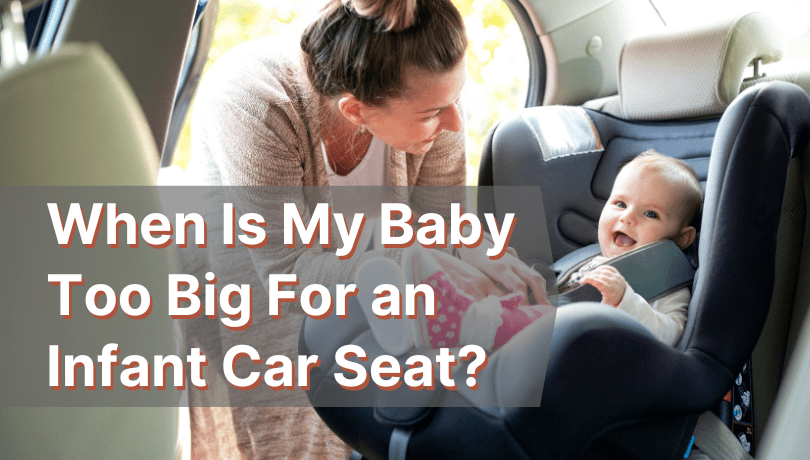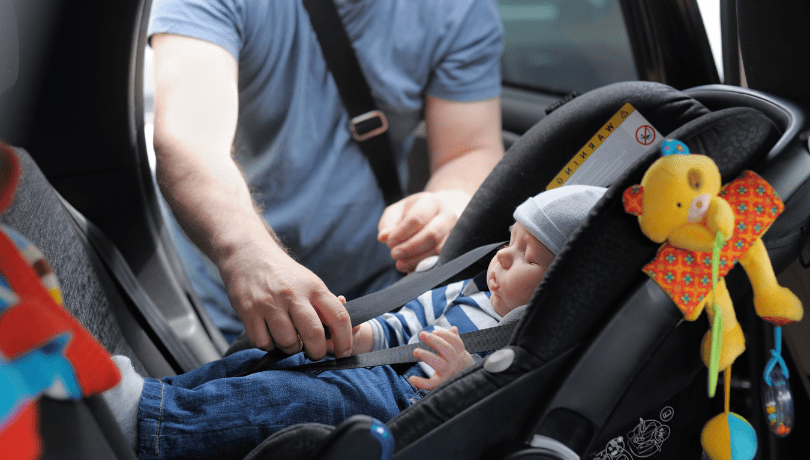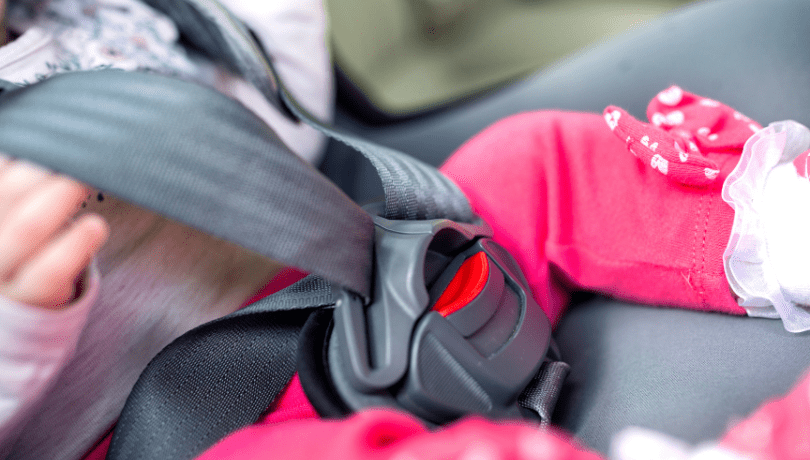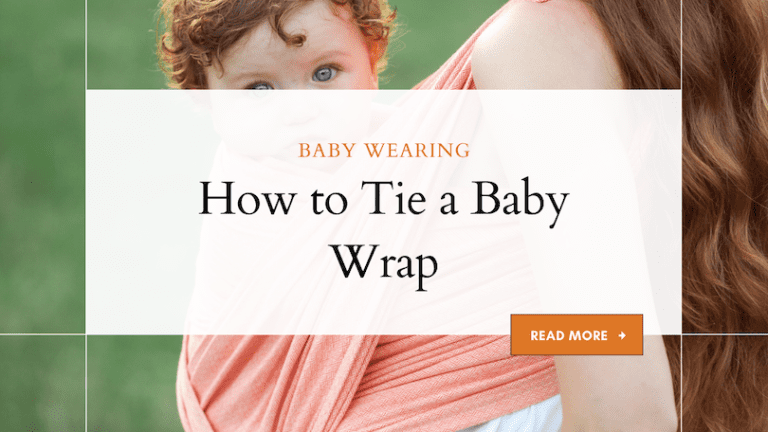When is My Baby Too Big For an Infant Car Seat
Newborns don’t develop head and neck control before four to six months; hence, the baby car seats are specifically designed to keep them from slumping forward and still keep them cozy. No wonder babies love sleeping in them! And unlike a booster or convertible seat, they can even be detached from the base and used as a carrier.
But, infants tend to outgrow them pretty quickly. So, I know it’s quite normal to worry about when is my baby too big for an infant car seat.
If you’re a new mom or a mom-to-be and wondering how long you use an infant car seat, fret not! From varying types of car seats to legal and safety regulations – you’ll find all the answers here!
Let’s dive in.

Table of Contents
Infant Car Seats
An infant car seat is a safety seat that keeps your baby secure in the car, protecting them from injuries and more. You can use them for up to one or two years. However, babies also experience a growth spurt at this stage, so it’s important to notice when they outgrow their infant seat and transition to a more appropriate safety seat.
When is My Baby Too Big for an Infant Car Seat: 3 Indicators
Okay, so here’s the thing: rear-facing infant car seats are the safest way to travel for little ones (recommended by experts, too). But, yes, growth spurts are also real and they happen quickly. So, just make sure you try and use your infant car seats for as long as possible.

And beyond that, here are 3 crucial indicators you should look for before deciding when to stop using infant car seats.
1. Manufacturer’s Weight and Height Limits
Most infant seats come with the manufacturer’s guide to weight, height, and age limits, to make the transition easier.
- And remember, just the age limit isn’t a good indicator for this transition because babies grow at different paces. You need to factor in weight and height too. The usual infant car seat weight limit ranges between 22 and 35 lbs and 26 to 36 inches in height.
- Also, after a point, it might get too difficult to carry the infant seat with your child inside it. That’s also a good indicator that your munchkin’s growing and needs a bigger seat soon.
Recommended For You: Know When to Switch to Booster Seats
2. One-Inch Clearance Rule
- According to the American Association of Pediatricians, once your baby hits the height or weight limit, it’s time for a switch. But who’s measuring every week?
- That’s where visual cues come in, like the 1-inch clearance rule: If your baby’s head is within 1 inch of the seat’s top, it’s time for the switch (maybe to a convertible seat).
But remember, every baby’s different – even if the seat’s good up to 36 inches, if their torso’s longer than their legs, they might outgrow it sooner. That’s where the next indicator comes in.
3. Positioning and Shoulder Straps
- I always keep an eye on their shoulders while putting them in the seat. If their shoulders stretch beyond the width of the seat, it may be time to transition.
- Also, the 5-point harness chest clip should align with their armpits. If it pinches, then adjust the height, transition to a larger seat, or switch from an infant car seat to a convertible car seat.

When Do Infant Car Seats Expire? Are Pre-Loved Ones Safe?
The typical life span of an infant car seat is six to ten years. It is to maintain the structural integrity of the seats and comply with the latest safety regulations. You can find the date on the label or the plastic shell.
Pre-loved baby gear is a lifesaver for budget-conscious parents. But with car seats, it’s a different story. They could pose risks because you can never be too sure about the seat’s expiration date. That’s why I always advise against it!
Know how you can deal with expired car seats responsibly through donation, recycling, and more.
At A Glance: Types of Car Seats
| Age Group | Types of Car Seats |
|---|---|
| 0 to 1 year | Rear-facing infant car seat/Convertible seat |
| 2 to 3 years Toddlers and preschoolers | Rear-facing convertible seat Combination seat |
| 2 to 9 years School-aged children | Forward-facing convertible Belt-positioning booster seat |
| 4 to 11 years | Belt-positioning booster seat |
| Children with special needs | Products from the National Center for the Safe Transportation of Children With Special Health Care Needs |
Flying with your baby? Here’s a practical installation guide with tips on flying with infant car seats.
Legal and Safety Regulations
Did you know that child car seat and safety laws vary between states? So, along with your state’s laws, you need to know a few common regulatory things that will help you stay compliant while on the road:
1. And/Or Requirement
- If the law in your state says ‘and’ while mentioning the transition criteria, it means your baby needs to meet all of them.
- But, ‘or’ indicates they can adhere to either criterion to transition to a convertible, booster, combination, or other appropriate seats.
- For example, in North Carolina, child safety regulations say children weighing 80 lbs or 8 years old need a booster seat. Hence, in this state, you can transition to the next phase if they fulfill either safety criteria.

2. Proper Use
- ‘Proper use’ is a term used when describing state laws and federal regulations around child safety restraints.
- It means following the manufacturer’s instructions for a specific car seat model, covering installation, usage, and disposal methods. Proper use of seats ensures optimum safety of our children on the road.
Recommended Reading: Are Infant Car Seat Bases Universal?
3. Federal Safety Standards
- Car seat laws and regulations are up to the state. However, car seat approvals are under the jurisdiction of federal laws.
- So, first, the manufacturers do their own checks and self-certify. After this, the federal government does the quality check.
- However, if your state requires a federally approved car seat, you must ensure the car seat has gone through the necessary checks and certifications.
When To Remove Infant Inserts From Infant Car Seats
With all my children, I’ve usually followed the brand’s instructions about removing infant car seats.
- Generally, these inserts are suitable until your baby hits 11 to 15 lbs, but it’s always wise to consult the manufacturer’s guide for specifics.
- Since newborns and smaller infants may not reach the shoulder straps without the insert, you can keep using them until they meet the weight and height requirements.
FAQs on Infant Car Seats for Babies
1. Do Preemies Need A Different Car Seat?
Yes.
1. Preemies are typically smaller children and don’t meet the minimum weight and height requirements to use infant car seats.
2. Additionally, premature babies often have respiratory challenges, making it hard for them to breathe in standard car seats.
The AAP recommends preemies undergo the car seat challenge test, or CSTS, under hospital caregivers’ supervision before deciding on a car seat (also necessary for babies born with Down Syndrome or the Pierre Robin Sequence).
2. How Long Can A 2-Month-Old Be In A Car Seat?
Try implementing the 2-hour rule if you’re confused with all the information and misinformation on the internet. The rule says babies shouldn’t spend more than 2 hours a day in their infant car seat to prevent developmental delays and breathing difficulties.
3. What Do I Do If My Child Slumps Forward Or Sideways In The Car Seat?
1. When securing your little one in the car seat, don’t completely immobilize their head. A slight head tilt to the side is okay.
2. But things like a forward head slump can pose risks if your baby lacks neck and head strength. So, for those circumstances, ensure proper car seat installation, harness positioning and avoid additional aftermarket infant inserts.
4. Is It Okay For A 2-Month-Old To Sleep In A Car Seat?
Not for too long, dear parents.
1. Once you get home, please move them to a safe sleeping environment like a crib or a bassinet.
2. Infant car seats are excellent for travel, but are not ideal for our little ones to nap or sleep in.
Wrapping Up: How Long Do You Use An Infant Car Seat?
When we parents travel with a newborn, we tend to become hyper-vigilant, constantly checking on our little ones from the rearview mirror. And after a point, you’re also going to want to know for how long to use an infant car seat and when to switch.
Notice the subtle signs. Check if they’ve reached the height and weight limits or are 1 inch or less away from the top of the seat. And of course, always make sure to follow your state’s child safety laws and regulations.
But hey, take your time transitioning them to a bigger seat. Like learning to walk or talk, it’s a major milestone. After all, they’re only little once!






